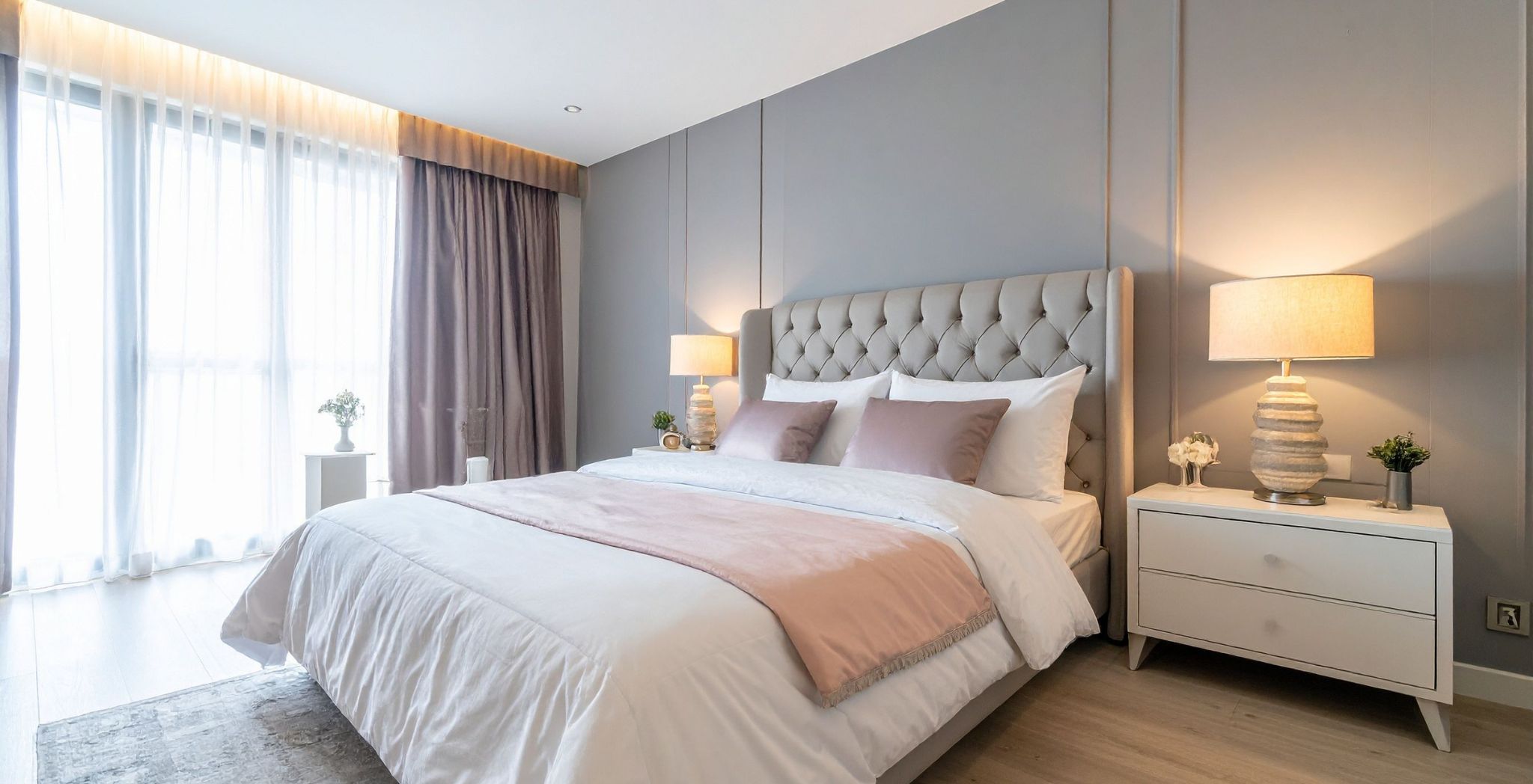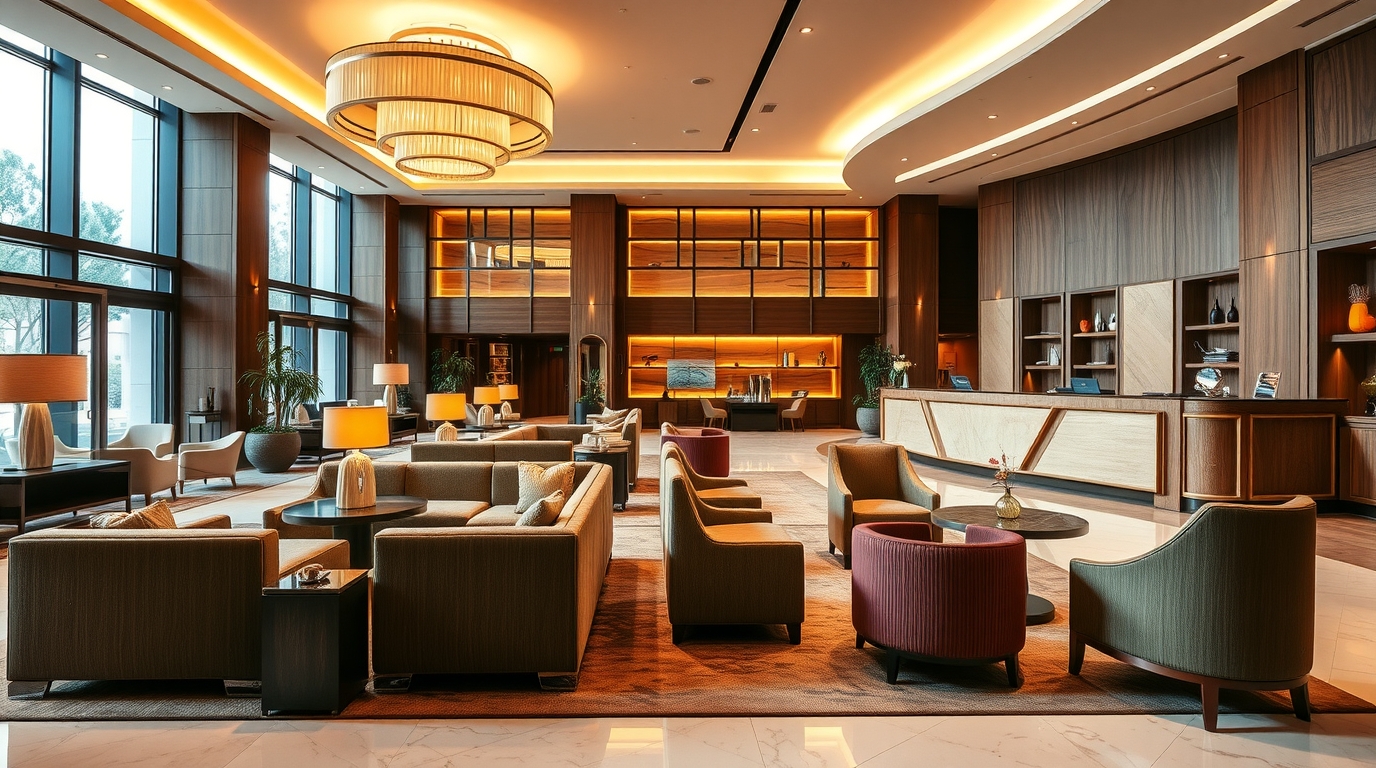In the world of luxury hospitality, first impressions are everything. Guests step into a hotel or restaurant expecting elegance, comfort, and a refined atmosphere. One of the first things they notice is the furniture. Whether it’s a plush armchair in the lobby, a sophisticated dining arrangement, or a finely crafted timber bedside table in a guest suite, indoor furniture plays a crucial role in defining the guest experience.
However, even the most luxurious hotel furniture can lose its appeal without regular care. Knowing how to maintain indoor furniture is essential for preserving its elegance, comfort, and functionality. At Elegant Hotel Furniture, we specialise in providing high-end hospitality furniture designed not only to impress but also to endure.
This comprehensive guide shares expert tips on hotel furniture maintenance—covering everything from cleaning and care routines to preventative measures. Whether you’re managing a boutique hotel or a high-end restaurant, these practical insights will help you extend the life of your indoor furniture, protect your investment, and consistently deliver a polished, inviting environment for every guest.
1. Understand the Materials: The Foundation of Proper Maintenance
Before diving into maintenance routines, it’s essential to understand the materials your furniture is made from. Different materials require different care strategies.
Timber and Wood Veneer
Classic, rich, and elegant, timber furniture is a hospitality mainstay. However, it can be susceptible to warping, scratching, or dulling if not cared for correctly.
- Tip: Dust regularly with a soft, dry cloth to prevent grime buildup. Use coasters and placemats to prevent water rings and heat marks.
- Avoid: Direct sunlight, which can fade wood tones. Keep pieces away from radiators or HVAC vents to avoid drying and cracking.
Upholstery (Fabric, Velvet, and Leather)
Whether it’s plush velvet armchairs or smooth leather lounges, upholstered furniture brings softness and comfort to hospitality spaces.
- Fabric and Velvet Care: Vacuum weekly with a brush attachment. Spot-clean spills immediately with a damp cloth. Always blot—never rub.
- Leather Care: Wipe with a damp cloth and use leather conditioner every 6–12 months to keep it supple.
Glass and Mirror Finishes
These add light and a sense of openness to rooms but show fingerprints and dust easily.
- Tip: Clean with a vinegar-water solution or a quality glass cleaner. Use microfiber cloths to avoid scratching.
- Avoid: Abrasive cleaners or cloths, which can cause micro-damage over time.
Metal Elements
Often found in legs, handles, and insets, metals can add a modern or classical edge depending on the design.
- Stainless Steel/Brushed Brass: Wipe with a damp microfiber cloth and dry thoroughly. Polish periodically with appropriate metal polish.
- Avoid: Excessive moisture and harsh chemicals that may corrode or tarnish the finish.
2. Set a Routine Maintenance Schedule
Establishing a regular maintenance schedule is key to preventing long-term wear and tear. Preventive care reduces costly refurbishments or premature replacements.
Daily Tasks
- Wipe down surfaces at the start or end of the day.
- Immediately attend to spills or stains to prevent absorption.
- Check for any visible damage or instability.
Weekly Tasks
- Vacuum fabric upholstery and crevices.
- Dust all surfaces, including underneath furniture.
- Polish wooden surfaces with a product appropriate to the finish.
Monthly Tasks
- Rotate cushions and rearrange seating to even out wear.
- Inspect for any loosening joints or bolts and tighten them.
- Apply protective sprays or conditioners where required (e.g., for leather or timber).
Annual Tasks
- Professional cleaning for upholstered furniture.
- Deep polishing of wood and conditioning of leather.
- Evaluate furniture for wear—consider professional refinishing where needed.
3. Staff Training: Your Frontline Defence
Often, it is the everyday handling of furniture by staff that determines its longevity. A well-trained team can make a substantial difference.
Train Staff To:
- Lift furniture rather than drag it.
- Use protective covers when moving large items.
- Understand basic spot-cleaning techniques.
- Report damage immediately for swift repair.
Housekeeping and maintenance teams should be aware of the specific requirements of each furniture type—particularly for high-touch pieces like lobby chairs, restaurant tables, or bedroom vanities.
4. Create Protective Environments
The environment in which your furniture sits contributes significantly to its condition over time.
Regulate Humidity and Temperature
- Extreme dryness can crack timber; high humidity can swell it.
- Aim for stable indoor humidity (ideally 40–60%) using dehumidifiers or humidifiers as needed.
Manage Sunlight Exposure
- Use curtains, blinds, or UV-filtering window film to protect furniture from direct sunlight.
- Rotate furniture occasionally to ensure even exposure to light.
Protect Floors and Furniture Bases
- Use protective pads on the feet of furniture to prevent scratching floors and reduce friction damage to legs.
- Regularly clean underneath furniture to prevent abrasive dirt accumulation.
5. Use Furniture as Intended
It may seem obvious, but misuse is a common cause of early furniture deterioration—especially in high-traffic hospitality venues.
Ensure:
- Guests and staff use pieces for their intended purpose. (E.g., no standing on chairs or sitting on tables.)
- Load-bearing limits are respected—especially for storage units or decorative shelving.
- Children’s furniture, if provided, is age-appropriate and supervised.
6. Invest in Quality Protective Accessories
Elegant hotel interiors should never compromise on style—but you can enhance protection subtly and effectively.
Suggested Accessories:
- Glass tabletops: Protect delicate wood underneath while maintaining visibility.
- Table runners and placemats: Add sophistication and protect from scratches and spills.
- Slipcovers for sofas: Useful during seasonal downtime or in event spaces.
- Armrest covers: Protect high-contact areas on armchairs and lounges.
7. Deal With Damage Promptly and Professionally
Even with diligent care, wear and tear is inevitable. But prompt action can prevent a minor blemish from becoming a major eyesore.
Recommended Actions:
- Keep a list of reliable local restorers and upholsterers.
- Maintain records of where furniture was sourced—this simplifies sourcing replacement parts or matching finishes.
- For high-value pieces, consider insurance that covers accidental damage or vandalism.
In many cases, refinishing or reupholstering is far more cost-effective than replacement—and maintains consistency in your brand aesthetic.
8. Choose Furniture That’s Built to Last
This might seem like advice for the purchasing stage, but longevity starts with selecting quality furniture. At Elegant Hotel Furniture, we design and supply furniture using time-tested construction techniques, superior materials, and durable finishes.
Features of Long-Lasting Furniture:
- Solid timber frames rather than particleboard.
- Mortise-and-tenon or dovetail joinery.
- High-resilience foam and stain-resistant upholstery.
- Scratch-resistant coatings on tables and desks.
Buying from reputable suppliers ensures you’re investing in furniture that won’t just look beautiful, but will withstand the demands of daily hospitality use.
9. Seasonal Storage and Rotation Tips
If your property has seasonal usage patterns—such as in resorts or conference spaces—smart storage and rotation can extend furniture life.
Tips for Storage:
- Store in dry, climate-controlled environments.
- Cover pieces with breathable fabric sheets—avoid plastic as it traps moisture.
- Clean and condition furniture before storage to prevent degradation.
Rotation Strategy:
- Move heavily used pieces to lower-traffic areas occasionally.
- Switch out decor pieces or accent furniture seasonally to freshen the look while giving other items a rest.
10. Maintain the Details: Hardware, Finish, and Decor
It’s not only about tables and chairs. Decorative hardware, inlays, knobs, drawer runners, and finishes all contribute to the luxury experience.
Hardware Maintenance:
- Tighten loose handles or knobs immediately.
- Polish brass, chrome, or brushed metal with suitable products.
Finish Touch-Ups:
- Use touch-up markers or repair kits for scratches and chips in wooden or painted surfaces.
- Re-wax or oil wood furniture if required, following manufacturer guidance.
Soft Furnishings and Accessories:
- Keep cushions fluffed and rotated.
- Launder or professionally clean decorative throws and curtains regularly.
The elegance of your interiors is often in the little details.
Conclusion: Elegant Furniture Deserves Elegant Care
At Elegant Hotel Furniture, we understand that furnishing a hospitality venue is a significant investment—not only in capital but in the reputation of your brand. Maintaining your indoor furniture goes beyond mere cleaning. It is a commitment to excellence, longevity, and the enduring aesthetic appeal that your guests expect and remember.
By combining timeless maintenance practices with an appreciation for quality craftsmanship, your hotel or hospitality venue can enjoy beautiful, functional furniture that stands the test of time—gracefully.
If you’re looking to upgrade or complement your existing pieces with furniture designed for both elegance and durability, explore our collections at www.eleganthotelfurniture.com.au.












